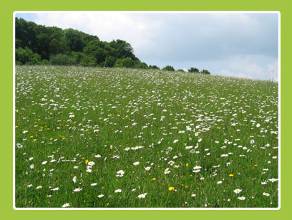BATTS COPSE ON THE ISLE OF WIGHT

Isle of Wight Council
Footpaths SS15 and SS90 lead to Batts Copse.
Batts Copse is part of the Sibden Hill and Batts Copse Local Nature Reserve on the west side of Shanklin, Isle of Wight.
The woodland is dominated by hazel on the eastern edge of the site with some garden escapes invading, including hydrangea and rhododendron. Moving west, the hazel becomes thinner and mixed woodland of oak, sycamore, hazel, elm, ash, beech and silver birch is found on the top of the hill with some hawthorn, blackthorn, rhododendron and gorse. There is elm scrub at the far west end of the site.
The ground flora is dominated by bracken and bramble. Resident birds include garden species such as blackcap and treecreeper, and passage migrants such as goldcrest, siskin, linnet and mistle thrush may be seen.
There is some unimproved acid grassland almost completely covered by bracken, interspersed with areas of gorse, bramble and rhododendron. This bracken cover has an understorey of bluebell, sheep’s sorrel, greater stitchwort, rosebay willowherb and red campion. In clearer areas, honeysuckle, foxglove and sheep’s sorrel dominate the flora. The amenity grassland on the western slopes is mown for recreational purposes.
Batts Copse nestles in the relatively steep-sided valley of a small brook, part of which has been modified to accommodate a pipe. The woodland through the gorge is heavily shaded and the ground flora consists of harts tongue and male fern, nettle, bramble and cleavers. The wood south of the gorge, however has a longer history and the ground flora includes wood anemone, bluebell, ransoms and pendulous sedge. The three cornered leek is a distinctive plant in late spring and early summer. The northern part of the woodland is dominated by sycamore and wild cherry. The woodland is home to a variety of mammals including fox, bats, and hedgehog. Badger and red squirrel are known to visit the site
Scrub areas in Batts Copse have been cleared and planted with hazel and silver birch. The scrub attracts redwing, greenfinch, bullfinch and song thrush. There are also grass snakes, slowworms, common frog and common toad.